Geometry Background
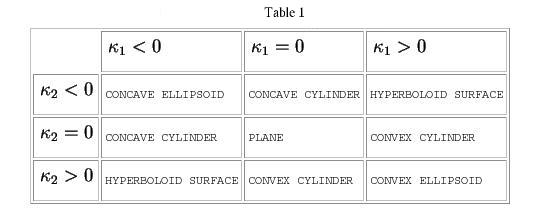
Given a point on a 3D surface there are two principal descriptions of the local curvature, the curvature class (the possible types are given in Table 1) and the curvature magnitude. The curvature class and the curvature magnitude can be computed from the two principal curvatures κ1 (the maximum local curvature) and κ2(the minimum local curvature).
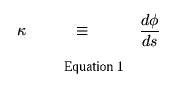
The curvature of a surface at a given point is a measure of the deviation from the tangent (see Equation 1); the normal curvature is the curvature in the plane of the normal.
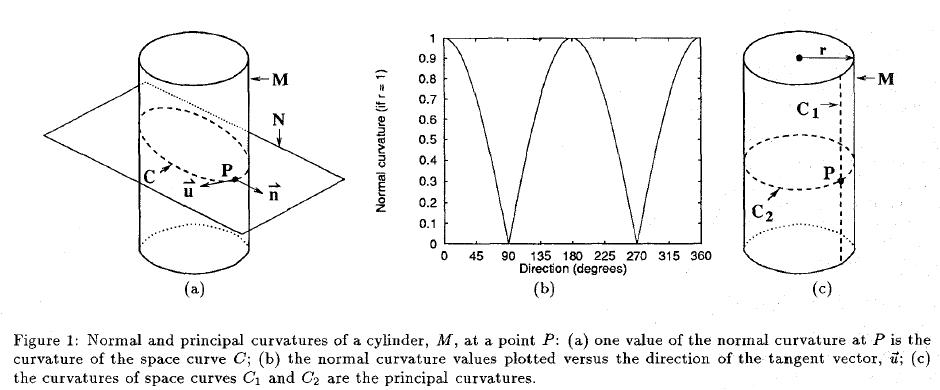
Figure 1(a) shows a cylinder intersected by a normal plane (N) in n (the normal vector to the point P) and u (the tangetial vector to the point P). u must be orthoganol to n but can can take on any direction in that plane (0° to 360°). The normal curvature is plotted in Figure 1(b) and from this κ1 and κ2 can be computed. In this example the minimum curvature (C2) is a straight line with κ = 0 and the maxminum curvature (C2) κ = 1 * radius of the circle (see Figure 1(c)).
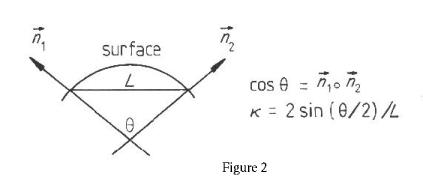 In Figure 2 the two normals n1 (=n) and n2 (=u) are seperated by a distance L on the surface of the object. The curvature κcan be computed from n1, n2 and L. L must be computed; this is different for different geometries (e.g. Figure 3 (a) shows a cylinder, Figure 3 (b) an Elipsoid).
In Figure 2 the two normals n1 (=n) and n2 (=u) are seperated by a distance L on the surface of the object. The curvature κcan be computed from n1, n2 and L. L must be computed; this is different for different geometries (e.g. Figure 3 (a) shows a cylinder, Figure 3 (b) an Elipsoid).
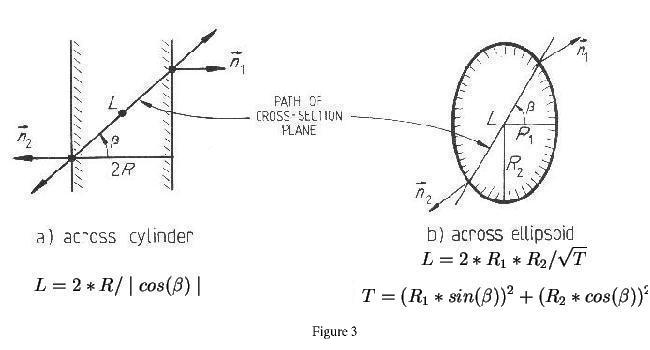


The mean curvature H (see Equation 3) and the Gaussian curvature K (see Equation 2) can be calculated from κ1 (p1) and κ2 (p2).
